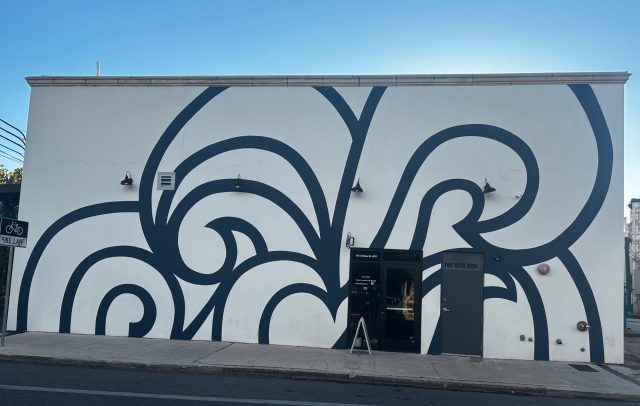
A quote attributed to Marcel Marceau, the French mime famous for his sad-faced clown, aptly describes my attempts at describing a meal at Mixtli: “Do not the most moving moments of our lives find us without words” (not that being without words has ever stopped me). Life’s events often include moments which move you deeply and stir your very soul. My inaugural dining experience at Mixtli was not so profound and cathartic as to move me to drastically change my life, but it certainly prompted a stirring awakening as I experienced what was conceivably the best restaurant meal I’ve ever had.
Several of the other effusive reviews I’ve written are mere hyperbole in comparison to what I’d like to say about Mixtli if I was skilled enough to do so. Mixtli is simply the best restaurant in which I’ve dined (yes, even better than Topolobampo). It’s so far superior to other restaurants I previously thought were outstanding that I scaled down my ratings for many of them. Mixtli is so much more than a restaurant that serves a great meal. It’s a restaurant that will give you a memorable and thoroughly enjoyable dining experience. From start to finish, you’ll be attended to by personally by a dynamic and knowledgeable staff. Consider yourself in the lap of luxury.
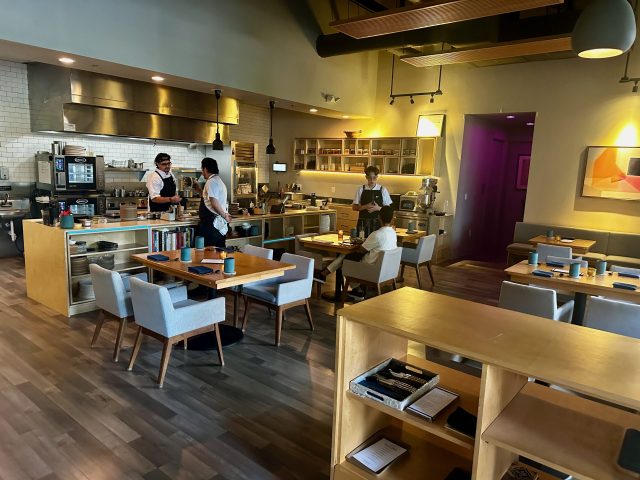
Mixtli translates to “cloud” in Nahuatl, the language of the Aztecs. Like a cloud, a meal at Mixtli is ethereal, as if floating over the nation which inspired its culinary fare. If your conception of Mexican food includes such adjectives as heavy, cheesy, spicy, unhealthy and fatty, Mixtli will blow those misconceptions out of the water. As Mixtli’s website explains, “To define Mexican cuisine is impossible. Mexico is as diverse as it is vast. Within its borders lie rocky mountains, humid jungles, arid deserts, and endless coasts: a stark diversity that forced each region to develop uniquely rich cultural and culinary histories.”
Mexico is a tapestry of diverse cultures, traditions, and languages. Each of its 31 states boasts its own unique identity in terms of gastronomy, culture and identity. Even the nickname differs for inhabitants of each state. Mixtli celebrates the diversity of Mexico’s cusine with state- or region-specific menus focusing on the gastronomy unique to that state or region: “Like clouds, our menu travels from place to place offering a tour in Mexican gastronomy. If the state has a border with the ocean, we start our trek on the coast and work inland, bringing dishes specifically from that region or state. After each season, the cloud travels to other lands and we begin again.”
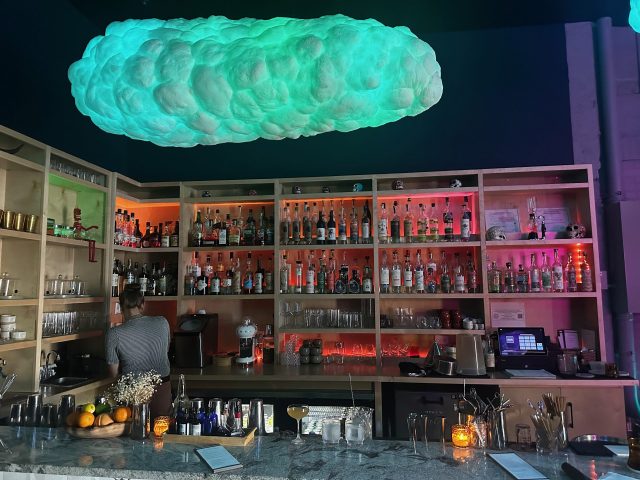
On the night of my inaugural visit, the region being honored was the “Tierra Caliente” or “hot land,” a cultural and geographical “region in southern Mexico that comprises some low-elevation areas of the states of Michoacán, Guerrero and Mexico. As the name suggests, the region is characterized by a hot climate. The overall precipitation is also low – around 24-inches per year, but can be as low as 16-inches in some low-lying areas of Michoacán and Guerrero.” I’m intimately acquainted with the cuisine of Michoacán, “the soul of Mexico,” but not of Guerrero.
If you’re wondering how a restaurant can be so familiar with the cuisine in 31 Mexican states whose cuisine can be diametrically different, remember that San Antonio is the home of the University of Texas – San Antonio (UTSA). UTSA is home to the nation’s largest Mexican cookbook collection, dating to the 1700s. The recipes used on Mixtli’s menu are taken directly from those tomes. UTSA provides a unique opportunity to interact with the collection. UTSA boasts about 2,500 books and manuscripts for chefs and writers to explore and Mixtli’s chefs do so regularly. Many of the texts have been translated and digitized for the general public to peruse and enjoy.
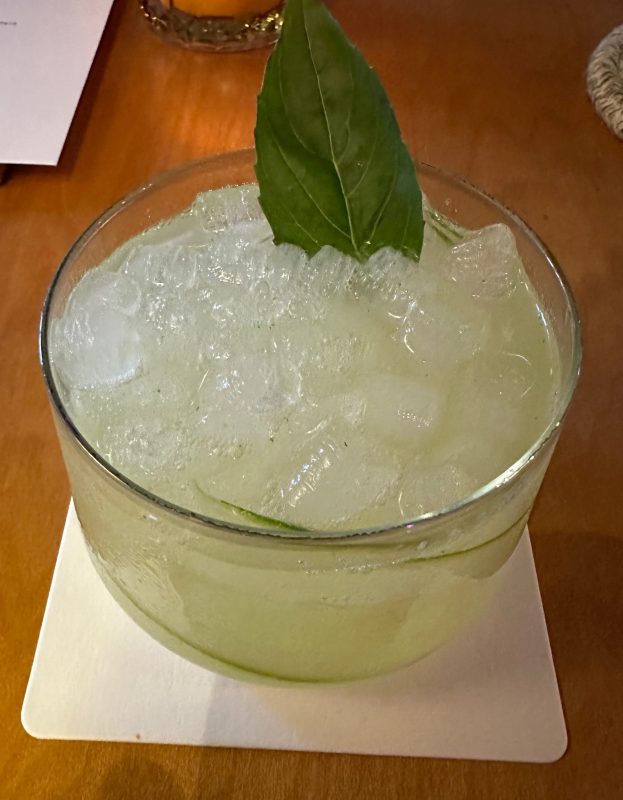
Mixtli is the brainchild of chef-owners Diego Galicia, a native of Toluca, Mexico and Rico Torres, a scion of El Paso, Texas. Though highly regarded chefs on their own, the two saw the opportunity to collaborate as a way to realize their shared vision of exploring Mexican cuisine from ancient to modern times through their collective lenses. In 2013, they leased a renovated railroad car in Olmos Park. Their liliputian enterprise was much smaller than their goals with only one long twelve-seat communal table to accommodate all guests. The restaurant quickly became a runaway success. By 2017 Food & Wine named the pair to its list of best new chefs in the country. A year later they were semifinalists for the James Beard Foundation’s Best Chef: Southwest award.
It soon became apparent that the only limit to Mixtli’s continued growth and success was its tiny quarters. Reservations for the twelve seats were the toughest ticket in town. After significant searching, they found an airy location in the flourishing Southtown neighborhood. The indefatigable co-owners designed the space and selected the furniture and art themselves. Mixtli began a new era in June, 2021. Their new venue seats up to 43 diners, including overflow space on a patio. On the Wednesday evening of my visit, ten diners had the entire restaurant to themselves.
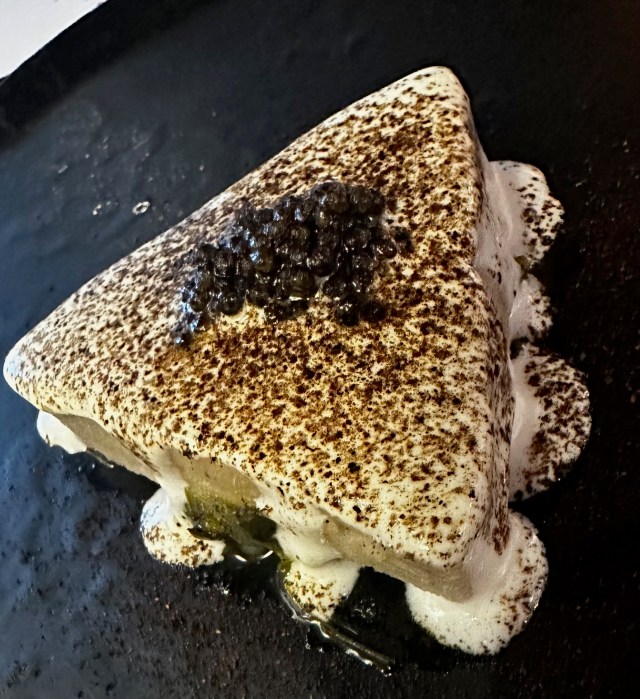
Though no restaurant would be successful without swelling crowds, the benefit to diners is an intimate atmosphere with more singularly-focused attention from the staff. At Mixtli that meant frequest visits from bar manager Lauren Beckman and sommelier extraordinaire Hailey Pruitt as well as from a certified spirits specialist (SSS) whose name escapes me. The trio put up with all my questions and compliments. One of the factors that made my visit to Mixtli a culinary experience and not solely an extraordinary meal was the delivery of each course by the chefs. On each visit, the chef explained the provenance of each dish, its ingredients and the technique employed to create it. They, too, were bombarded with questions and compliments I might not have been able to give had the restaurant been full. UPDATE: In November, 2024, Laren and Hailey were well-deserving recipients of 2024 the MICHELIN Guide Texas Outstanding Service Award Winners.
Arriving thirty-minutes early, I was escorted to Mixtli’s magnificent bar. Though “bar” is usually something I equate only to soap, bar manager Lauren Beckman made me feel right at home. She regaled me with her experiences at the 2024 James Beard Foundation’s annual award ceremonly. Though Mixtli did not win the Foundation’s coveted national award for “Outstanding Restaurant,” it was one of five finalists. That gives it an exclusivity and prestige that ranks it among the country’s very best. UPDATE: In November, 2024, Mixtli became one of fifteen restaurants from the Lone Star State to earn a star from the MICHELIN Guide Texas. The iconic rating is awarded to restaurants that meet exceptionally high standards of cooking. Mixtli also earned a MICHELIN Bib Gourmand rating denoting restaurants serving high-quality fare at moderate prices and are often personal favorites among Michelin inspectors when dining on their own time.
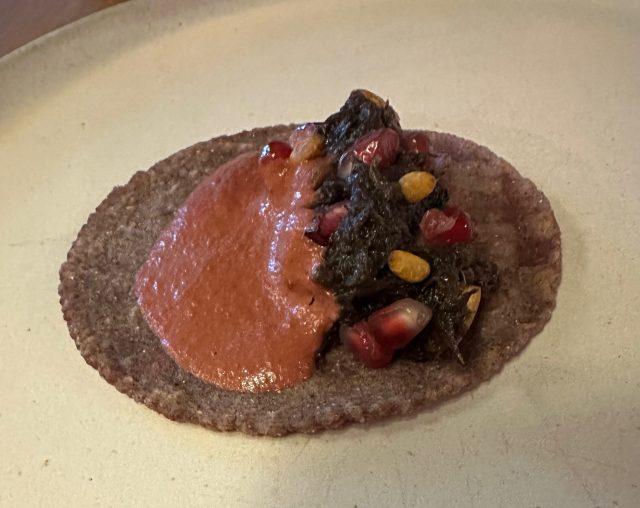
As an avowed teetotaler, my (small) disappointment at Mixtli not offering Big Red quickly abated when Laura told me about Mixtli’s bar program. That program includes a panoply of non-alcoholic beverages for those of us who don’t imbibe the “adult” stuff. Each non-alcoholic beverage showcases Laura’s immense talent and creativity. Like the restaurant’s cuisine, the bar program offers a variety of cocktails rooted in the history and romance of Mexican lore . Whether it be wine, spirits, cocktails or mocktails, you’re in for a treat. While seated at the bar, my first course arrived. The corn esquites tart (charanda, tepache foam) was a one-bite masterpiece of deliciousness, so sublime I wanted a platter of ten. Laura explained that charanda is typically a Mexican spirit made from sugarcane, but she doesn’t allow it to ferment long enough to become alcohol. Similarly tepache is made by fermenting fruit skins with piloncillo, spices and water. Apparently I was so eager to try my hand at imitating Guy Fieri, (he of the Jaws one-bite mouth) that I forgot to photograph one of the best first courses you’ll find anywhere.
I likewise forgot to photograph the sopa de aguacate (crab, avocado, tomatillo) which may have been the most “familiar” dish of the evening. Fortunately I’m not above occasionally borrowing with pride (with all due credit to mysanantonio.com). I’ve enjoyed sopa de aguacate (literally avocado soup) at every restaurant in which I’ve had it, but none more than Mixtli’s version. As with the rest of the restaurant’s culinary program, the sopa showcases the region’s agrarian bounty. There are literally hundreds of versions of this soup, but Mixtli makes it their own with ingredients that shine. Tomatillo, for example, provides a hint of tangy citrus. A single crab claw (mine was not quite as big as the one pictured below) complements the traditional Mexican soup and lends a briny, sweet flavor.
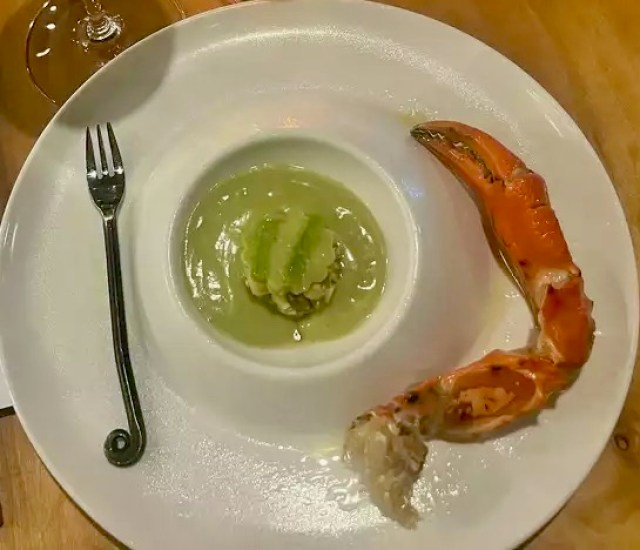
My first non-alcoholic beverage was a sandita fresca (watermelon rind, green apple, cucumber, basil, lemon), a blend of fruits with one herb (aromatic basil) and cucumber, which is technically both a fruit and a vegetable. This refreshing beverage is named for sandita, (also known as little watermelon, mouse melon, Mexican sour gerkin, or cucamelon), a crunchy slightly sour cucumber hailing from Central and South America. There is alchemy in this beverage, a magic that will delight your taste buds as it cools and refreshes you. Somewhat resembling Mountain Dew, it’s the first of four wondrous beverages that I would make reservations to enjoy.
Next along the culinary cavalcade was corunda (white corn, rajas, koji jocoque) a traditional Mexican tamale that originated in the pre-Hispanic period in the state of Michoacán. Corundas are usually triangular or spherical in shape and are often eaten with sour cream and red salsa. Mixtli’s rendition is made from white corn enveloping rajas (strips of vegetables) and topped with jocoque, a creamy, slightly sour dip somewhat resembling Lebanese labneh, a yogurt cheese made by draining yogurt twice. A dollop of caviar crowns the corunda. Needless to say, it’s the best tamale I’ve ever had and I’ve had hundreds of them. (My friend Melinda Martinez tells me her brother Chris Guardiola makes the best tamales in Texas, but I have yet to try them.)

Each dish delivered to my table prompted delberation: “How could Mixtli possibly top this?”. That was my reaction even before having tried the mole rosa (roasted beets, smoked hibiscus, pomegranate) which looked like one of those “worth a thousand words” images now permantly enscribed on my mind. Now I can say I visited San Antonio and had the very best taco offered in a state renowned for its tacos. The mole rosa acquired its distinctive color from beets and was served atop a blue-corn taco gently carressing smoked and shredded hibiscus with a smattering of pomegranate seeds. I’ve had mole rojo many times, but never before mole rosa. Mole is an amalgam of ingredients working concordantly together. The mole rosa played a symphonic opera on my taste buds.
Were it not for Mixtli’s version of horchata, the Michoacan thyme (mango, thyme, lime, honey-coconut foam) would have been my favorite among the beverages. Served on a distressed clay mug seemingly more appropriate for a hot beverage, it even resembled steaming coffee courtesy of the honey-coconut foam. From among all the beverages served, this may have been the most complex–or at least it had the most going on in terms of different notes making love to different parts of my palate. When the liquid portion was but a memory, I savored the thyme, reminding me why thyme is one of my favorite culinary herbs. I may have to move to Mexico to have Michoacan thyme again.
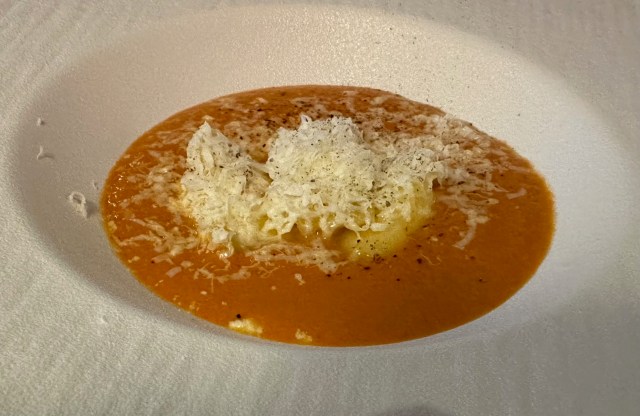
When introducing the pasta de rancho (requezon, lemon, tomato), Chef Torres elucidated that Italians from the Lombardy region settled in the Michoacán and Guerrero regions. That explains this unique pasta dish made with very traditional and very familiar Italian ingredients. Submerged below strewn requezon (a soft, white, lumpy cheese made from sour milk) and a tomato sauce lagoon is a single stuffed pasta tablet. This Italian inspired dish not only inherited the comfort food qualities of Italian dishes with the vibrant personality of Mexico.
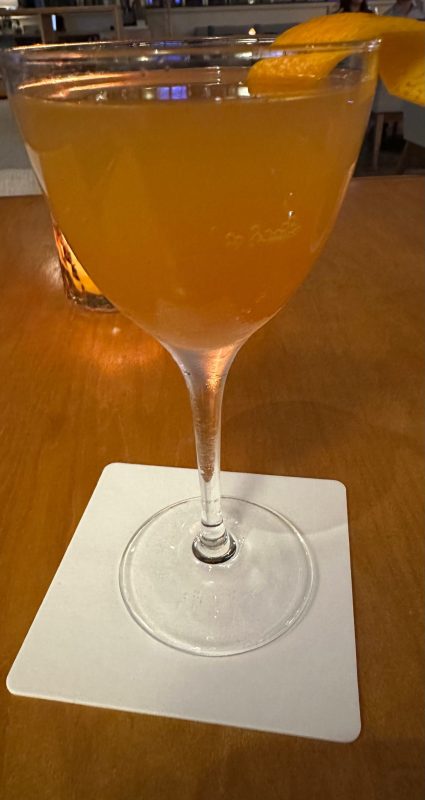
Tepaché, a refreshing, slightly fermented drink made from pineapple peels and piloncillo (conical shaped brown sugar) contains less alcohol (two- to three-percent alcohol-by-volume) than many of Mexico’s fermented drinks. Mixtli offers a tepaché (corn husk, pineapple skin, black pepper, cinnamon, clove, pilocillo, lime) on the nonalcohol beverage menu. The reason it’s nonalcohol is that it isn’t allowed to ferment. That makes it perfect for an alcohol abstainer like me. Served in a stemmed glass and sans ice, it’s similar to the color of ice tea with a sweet, citrusy flavor all its own. Cinnamon and clove impart a warm, spicy, and sweet flavor with a touch of citrus and earthiness.
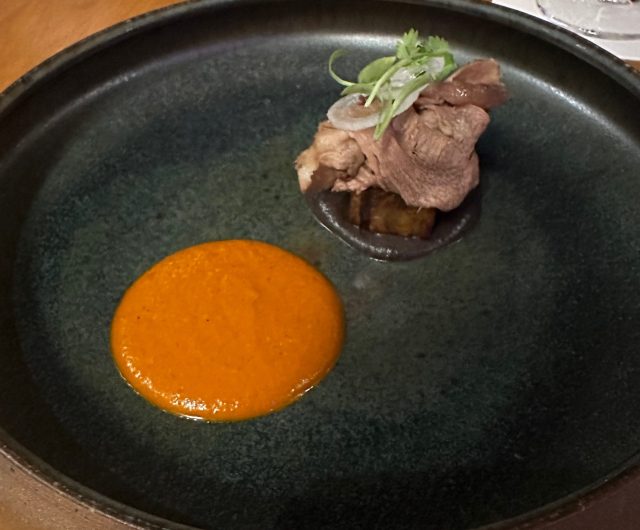
The second of three moles is yet another revelation as well as an exemplar of the diversity of mole. Mole isn’t even the name ingredient. Lengua X Plantain is. Mole, however, is what I couldn’t wait to try. Mole is another Nahuatl term, meaning “sauce,” but it’s so much more than that. Much like “salsa,” in contemporary Mexico the term is used for a number of sauces, some quite dissimilar. This was my first experience with peanut mole, a blend of Afro-Indigenous and native flavors. Hopefully it won’t be my last experience. Like all moles, it’s created from dried chiles, nuts, seeds, perhaps chocolate and more. Some traditional moles require anywhere from thirty to one-hundred ingredients. Perhaps that’s why it’s so challenging to pinpoint the nuances and complexities of one of the most complex and flavorful dishes there is.
A ribbon of thinly sliced luenga (beef tongue) sits atop a single plantain. Lengua has a rich, distinct flavor and a tender texture. Some claim it tastes like a delicious, tender steak, while others say it’s similar to pot roast with a hint of a musky flavor. Maybe its true flavor is tastebud specific. I do know that some diners won’t even try it. Just the thought of eating tongue is off-putting to many. Having had lengua in various ways and on many occasions, there’s nary a notion to me that it’s off-putting. Lengua should be on every foodie’s repertoire.
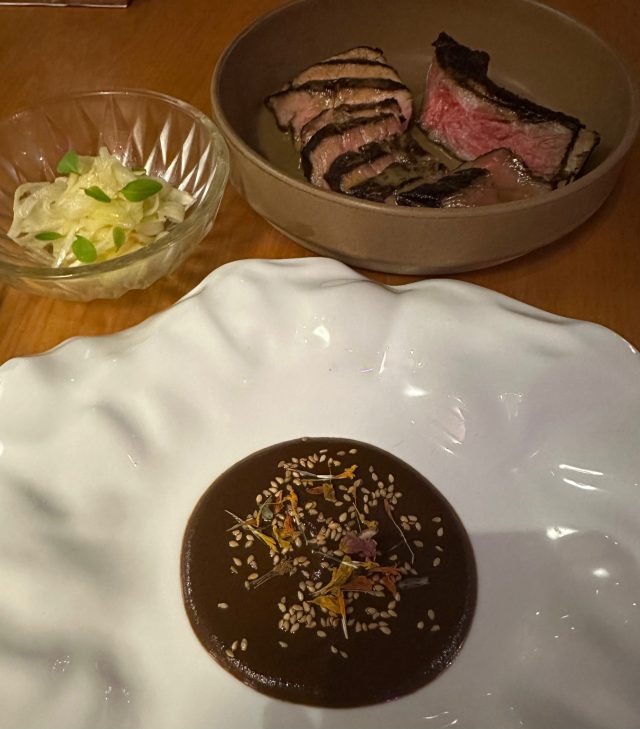
The troika of magnificent moles was made complete with a mole de cafe (brined pork chop, apple, marigold). Chef Torres explained that the region’s volcanic terrain is responsible for the rich, fecund soil in which the wonderful Michoacán coffee is grown. The nuances and subtleties of that coffee is redolent in the richness of this wonderful mole which is studded with flower seeds. Medallions of perfectly pink brined pork chop are served in a separate bowl. I counted eight medallions along with a pork chop bone from which more meat could be extricated. The pork chop was porcine perfection, as good a chop as I’ve had in quite a while. An invigorating apple slaw was provided as a palate-cleanser.
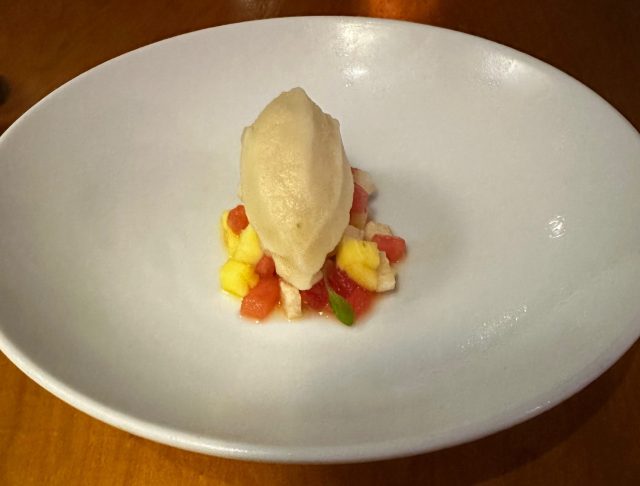
In the realm of music, an intermezzo is a movement coming between the major sections of an extended musical work (such as an opera). Its application in the culinary arena is similar. Mixtli’s version of intermezzo (at least on the night of my vist) was a single (and far to small) scoop of a citrusy sherbet flanked by finely cut pieces of pineapple and watermelon. This dessert-quality offering was of exhiliarating “I could die happy now” caliber (but then, so was everything else). My Kim is the frozen dessert (ice cream, sherbet, gelato, sorbet, etc.) fanatic in our family. She would have loved this one.
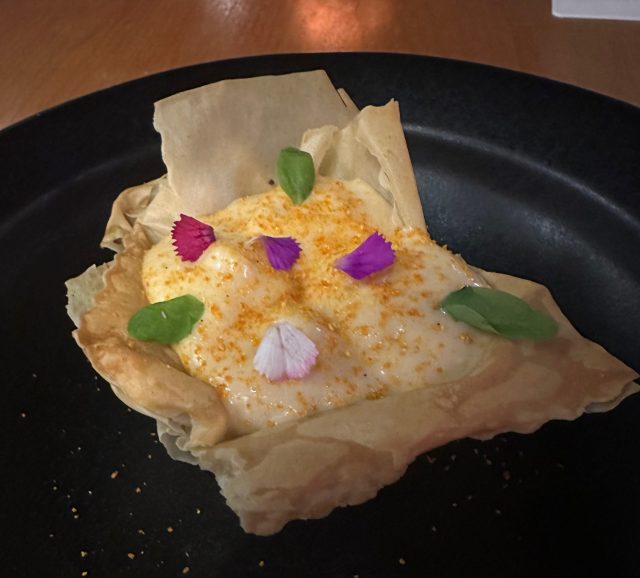
The final course on my night of indulgence was nieve de pasta (corn custard, caramelized milk, hazelnut). Nieve de pasta (caramelized milk ice cream) is a Michoacán dish. Translating to “paste ice cream” in English, it’s typically an ultra-thick and pasty cream reminiscent of condensed milk or dulce de leche. Mixtli’s unique approach is in using a corn custard topped with crushed hazelnuts and edible flowers. The corn custard is nestled in a whisper-thin, layered shell similar to filo dough. It adds a delightful textural contrast to a world-class dessert.
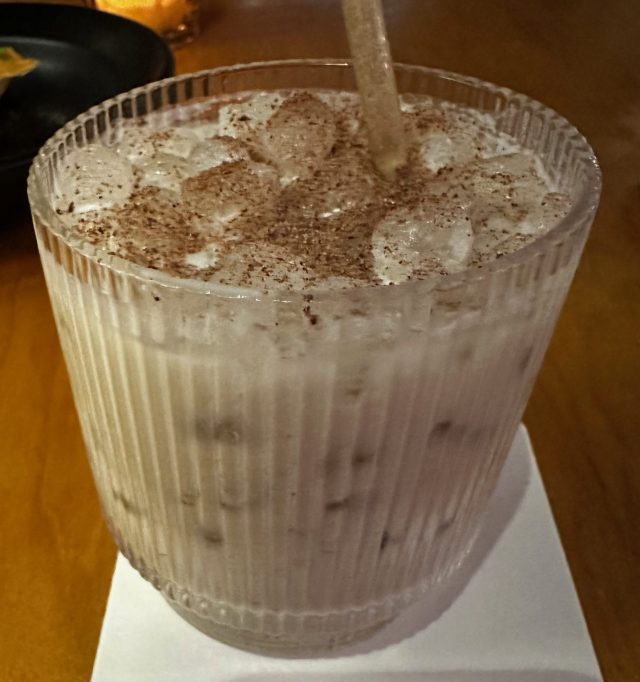
My final beverage was horchata (banana milk, toasted pepita seeds, cacao nibs). It was the most unique and delicious horchata I’ve ever had, thanks largely to the banana milk. I expected it to be outstanding because sommelier Hailey told me it was her favorite. What I didn’t expect was that it had the perfect amount of cinnamon (usually my Kim and I ask for more). Invariably horchata is sweet, creamy, and refreshing beverage that usually tastes like almonds. This one tastes instead of toasted pepita seeds, a variation that makes it absolutely wonderful.
In October, 2017, the United Nations Educational, Scientific and Cultural Organization (UNESCO) named San Antonio a Creative City of Gastronomy, making it one of just two cities in the U.S. (the other is Tucson, Arizona) to be so honored. To be designated as the Creative City of Gastronomy makes it a city well worth visiting for all foodies. Mixtli is an exemplar of the standards and qualities that make San Antonio worthy of UNESCO’s honor. It’s my new all-time favorite.
Restaurant Mixtli
812 S Alamo Street, Suite 103
San Antonio, Texas
(210) 338-0746
Website | Facebook Page
LATEST VISIT: 18 September 2024
# OF VISITS: 1
RATING: N/R
COST: $$$$$$
BEST BET: Horchata, Corunda, Nieve De Pasta, Mole De Cafe, Lengua X Plantain, Tepache, Pasta de Rancho, Michoacan Thyme, Mole Rosa,
REVIEW #1420